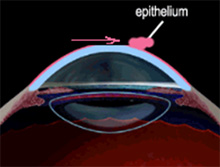What is the best technique for Brushing ..?
There are a number of effective brushing techniques. Patients are advised to check with their dentist or hygienist to determine which technique is best for them, since, tooth position and gum condition vary.
One effective, easy-to-remember technique involves using a circular or elliptical motion to brush a couple of teeth at a time, gradually covering the entire mouth.
Place a toothbrush beside your teeth at a 45-degree angle and gently brush teeth in an elliptical motion. Brush the outside of the teeth, inside the teeth, your tongue and the chewing surfaces and in between teeth.
Using a back and forth motion causes the gum surface to recede, or can expose the root surface or make the root surface tender. You also risk wearing down the gum line.
Soft or hard bristles?
In general, a toothbrush head should be small (1″ by 1/2″) for easy access. It should have a long, wide handle for a firm grasp. It should have soft, nylon bristles with round ends. Some brushes are too abrasive and can wear down teeth. A soft, rounded, multi-tufted brush can clean teeth effectively. Press just firmly enough to reach the spaces between the teeth as well as the surface. Medium and hard bristles are not recommended.
How long should I brush?
It might be a good idea to brush with the radio on, since dentists generally recommend brushing 3-4 minutes, the length of an average song. Using an egg timer is another way to measure your brushing time. Patients generally think they’re brushing longer, but most spend less than a minute brushing.
To make sure you’re doing a thorough job and not missing any spots, patients are advised to brush the full 3-4 minutes twice a day, instead of brushing quickly five or more times through the day.
Should I brush at work?
Definitely, but most Americans don’t brush during the workday. Yet a recent survey by Oral-B Laboratories and the Academy of General Dentistry shows if you keep a toothbrush at work, the chances you will brush during the day increase by 65 percent.
Dentists recommend keeping a toothbrush at work.
Getting the debris off teeth right away stops sugary snacks from turning to damaging acids, and catches starchy foods like potato chips before they turn to cavity-causing sugar. If you brush with fluoride toothpaste in the morning and before going to bed, you don’t even need to use toothpaste at work. You can just brush and rinse before heading back to the desk.
If you don’t have a toothbrush, rinsing your mouth with water for 30 seconds after lunch also helps.
The following tips may improve your work-time brushing habits:
- Post a sticky note on your desk or computer at work as a reminder to brush teeth after lunch.
- Brush teeth right after lunch, before you become absorbed in work.
- Store your toothbrush and toothpaste at work in a convenient and handy place.
- Make brushing your teeth part of your freshening up routine at work.












